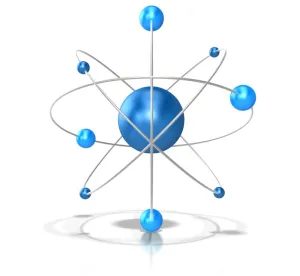The USPTO Patent Trial and Appeal Board (PTAB) denied institution of two Inter Partes Review challenges brought by Amgen, Inc. against two Humira patents covering stable formulations of anti-human Tumor Necrosis Factor alpha antibodies. The PTAB decisions illustrate the potential importance of establishing unpredictability in the field when defending against obviousness challenges.
The Humira Patents At Issue
The patents at issue were U.S. Patent 8,916,157 and U.S. Patent 8,916,158, assigned to AbbVie Biotechnology Ltd.
Claim 1 of the ‘157 patent recites:
1. A stable liquid aqueous pharmaceutical formulation comprising
(a) a human IgG1 anti-human Tumor Necrosis Factor alpha (TNFα) antibody, or an antigen-binding portion thereof, at a concentration of 20 to 150 mg/ml,
(b) a tonicity agent,
(c) a surfactant, and
(d) a buffer system having a pH of 4.0 to 8.0,
wherein the antibody comprises the light chain variable region and the heavy chain variable region of D2E7.
Claim 1 of the ‘158 patent recites:
1. A stable liquid aqueous pharmaceutical formulation comprising
(a) a human IgG1 anti-human Tumor Necrosis Factor alpha (TNFα) antibody, or an antigen-binding portion thereof, at a concentration of 20 to 150 mg/ml,
(b) a polyol,
(c) a surfactant, and
(d) a buffer system having a pH of 4 to 8,
wherein the antibody comprises the light chain variable region and the heavy chain variable region of D2E7.
Unpredictability Forecloses Obviousness
In its petitions, Amgen asserted that certain claims of both patents were invalid as obvious in view of (i) Lam and Barrera or (ii) Salfeld and Heavner. Taken together, the asserted references appear to disclose each aspect of the claimed formulations, but AbbVie convinced the PTAB that the preparation of stable liquid aqueous formulations of antibodies at the recited concentration was an unpredictable undertaking:
[O]n this record, we are not persuaded that the prior art provided sufficient guidance such that a skilled artisan would have had a reasonable expectation of success in arriving at the formulation of stable, liquid pharmaceutical compositions comprising antibodies at a concentration of 20 to 150 mg/ml.
For example, Amgen fails to direct us to a commercially available antibody product that was available in liquid form, within the claimed antibody concentration range. As noted above, REMICADE™ was sold in lyophilized form, and its product information indicated it should be used within three hours of liquid reconstitution. …. In other words, REMICADE™ was not a stable liquid antibody formulation.
Further, Amgen does not persuade us that the Wang article “provide[d] guidance on how to formulate such composition” … to a sufficient degree to have provided a skilled artisan at the time with a reasonable expectation of success to arrive at the claimed composition. Although the Wang article indeed provides general guidance, the Wang article also underscores the unpredictability of the undertaking. See Ex. 1017, 2 (noting that “the structural differences among different proteins are so significant that generalization of universal stabilization strategies has not been successful”). …. [Under the applicable burden of persuasion,] Amgen has not persuaded us that Wang provides a reasonable expectation of success in making stable liquid antibody formulations as a general matter. In contrast, we agree with AbbVie that, on the whole, Wang suggests a high degree of unpredictability in the antibody formulation art.
Turning to the asserted references, the PTAB did not find sufficient guidance to support the selections required to arrive at the claimed formulations or a basis for finding a reasonable expectation of success. Thus, the PTAB refused to institute Inter Partes Review of these Humira patents.
Be Careful What You Wish For
Unlike the world of small molecule drugs where most companies consider themselves to be primarily an “innovator” or a “generic” company, in the world of biologics the same companies are leading the way on both sides of the originator/biosimilar divide. In this case Amgen likely was trying to clear the patent landscape for its own biosimilar of Humira, but Amgen is the BLA holder/patent holder in the first case where the Federal Circuit interpreted the biosimilar patent dispute resolution procedures of the Biologics Price Competition and Innovation Act (BPCIA). While the PTAB didn’t comment on it in its decisions, AbbVie argued in its Patent Owner Preliminary Responses that Amgen’s arguments regarding obviousness and likelihood of success were inconsistent with positions Amgen took when pursuing its own antibody formulation patents. The probability of finding themselves on both sides of antibody/biosimilar disputes may make companies more cautious about the positions they advance, or at least pause to consider the potential implications when they are on the other side.




 />i
/>i

